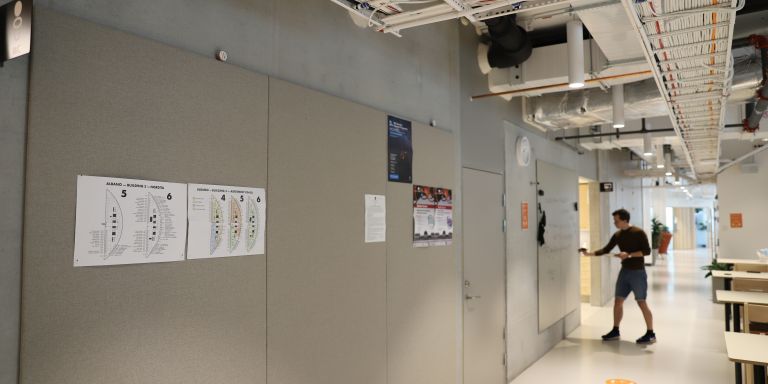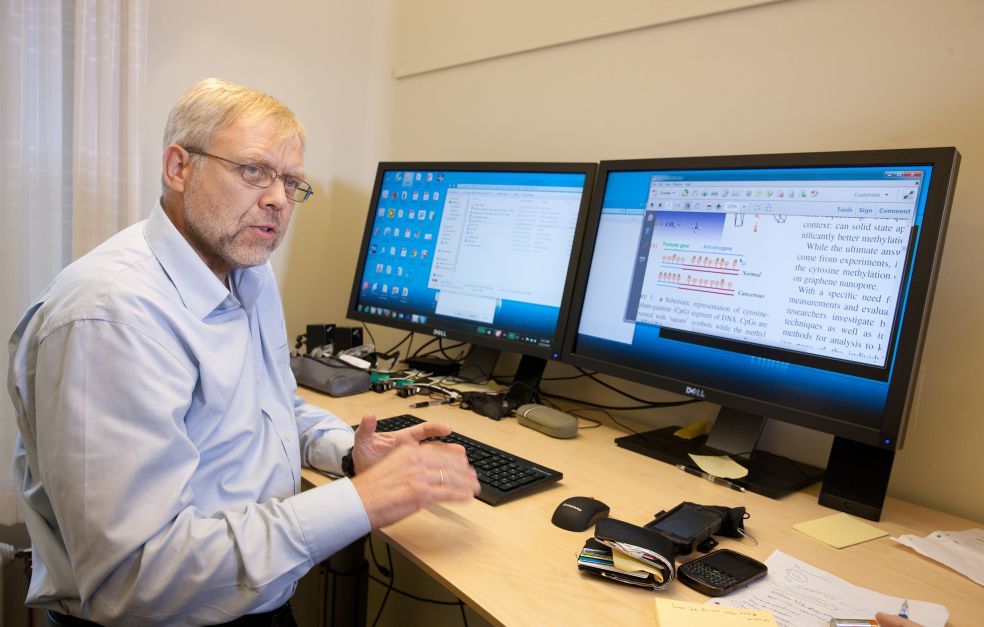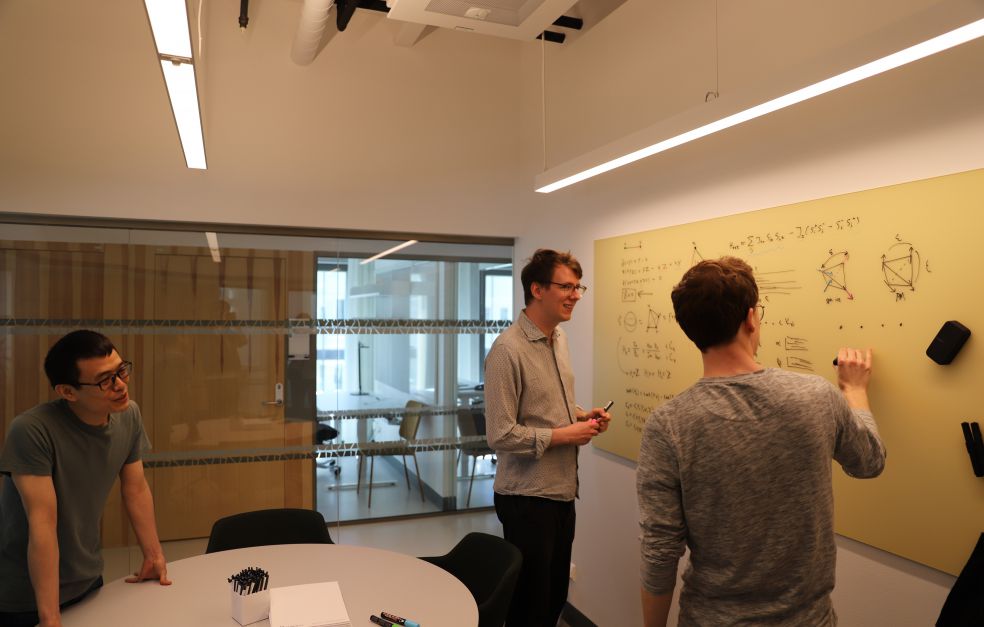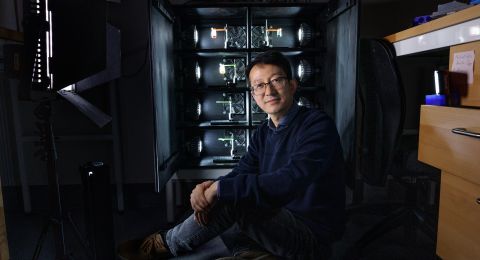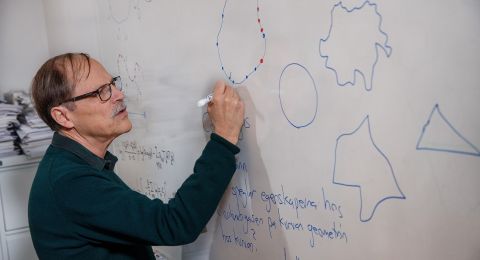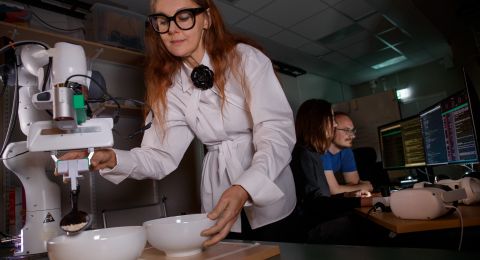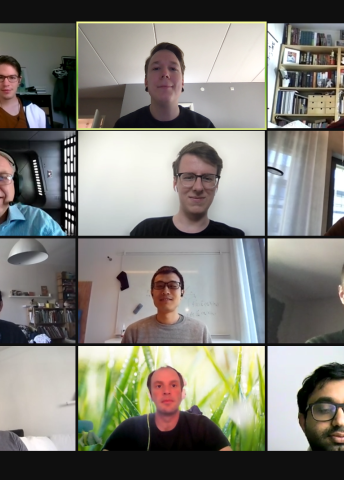
Project Grant 2019
Dynamic Quantum Matter
Principal investigator:
Professor Alexander Balatsky
Co-investigators:
Stockholm University
Emil Bergholtz
Stefano Bonetti
KTH Royal Institute of Technology
Jens Bardarson
Uppsala University
Annica Black-Schaffer
Institution:
Stockholm University
Grant in SEK:
SEK 28 million over five years
“We want to take a closer look at unknown and unpredicted states that can occur as a result of a given dynamic or effect on various quantum materials. We hope to create a new theoretical framework that can play a major part in the exploration of quantum mechanics,” Balatsky says.
Strides made in quantum physics in the early twentieth century helped create a new view of matter and the universe. Quantum physics describe how matter and energy behave at the most fundamental level. In the quantum world, phenomena occur that are hard to understand, and even harder to influence using traditional methods.
One reason for our limited understanding is that the role played by dynamics in quantum mechanical systems has not yet been established. Most systems have been described when in equilibrium, without energy losses or time dependence.
Second quantum revolution
Yet it is the very dynamics of quantum mechanical systems that give them such huge potential. Balatsky elaborates:
“We are in the middle of the second quantum revolution. Simply put, this means we can begin to benefit from the bizarre phenomena and properties of the quantum world, and use them in new materials and applications.”
He considers that the first quantum revolution started when Niels Bohr presented his coherent interpretation of quantum theory. This marked the beginning of a better understanding of the world. Niels Bohr founded the school that led to birth of what was later to become the Nordic Institute for Theoretical Physics (Nordita), where Balatsky is conducting his research.
“We are extremely grateful that Knut and Alice Wallenberg Foundation has given us the opportunity to carry out this strategically important project. Now we will be able to tackle some of the really big issues in our field.”
Predicting new quantum states
The project gathers theoreticians and experimentalists from KTH Royal Institute of Technology, Stockholm University and Uppsala University. Progress can only be made with a highly interdisciplinary approach. Balatsky explains:
“Our team consists of internationally competitive research teams in all relevant fields. We’re working simultaneously on multiple fronts, which will enable us to discover phenomena that doubtless exist but are hidden from us, and therefore unknown.”
The project comprises two parts. In one, the researchers are subjecting different quantum materials to direct impacts, such as short and intense laser flashes. Exposing a material to high wavelengths for a controlled period forces the constituents of its atoms out of equilibrium, causing them to momentarily acquire completely new properties.
One aim of the second part is to develop methods of predicting and studying the quantum properties that occur when a particle loses its energy or is parted from its surroundings. They posit that dissipation and thermal effects can enable new states or can lead to novel states in quantum systems, opposite to conventional wisdom.
Materials and states to be studied have quantum correlations that control their properties; hence they are called quantum materials. The quantum materials being studied include “Dirac” materials. These possess quantum mechanical properties enabling them to become magnetic or superconductive. Another quantum material is SrTiO3, an oxide of strontium and titanium. Under the right conditions, the researchers believe it can be induced to become superconductive at low temperatures.
The ability to affect more materials in a similar way may open the way to developing entirely new electronic components.
“We will be exploring a number of theoretical approaches, numerical as well as analytical, in order to examine a broad class of models in which different dynamic phases can then be induced and probed experimentally.”
Toward a quantum computer
It is obviously impossible to divine what applications may result from a theoretical framework for the unknown. For many people, quantum computing is the application that will bring quantum mechanics closer to the real world. But Balatsky stresses that the wait for a quantum computer breakthrough has not caused developments in the field to stall:
“We’ll see many steps along the way to a quantum computer – new quantum technologies that complement what a quantum computer can do. Our primary aim is to give more researchers the opportunity to take those steps based on the knowledge we produce,” he says.
The time is ripe for new steps to be taken in quantum mechanics, due in large part to the increased scope for controlling quantum mechanical states.
“One advance is that the new vacuum tubes that control the synchrotron light at MAX IV make it possible to obtain much better signals than before. We also have lasers with a much higher resolution than ever before. And the huge increase in computing power offers unique potential,” Balatsky says.
He likens access to experimental facilities such as the MAX IV laboratory and the forthcoming European Spallation Source (ESS) to the telescope invented by Galileo in 1609.
“New instruments and new frameworks enable us to make new discoveries. Imagine you were the first person to see the night sky through a telescope! These days our telescope is MAX IV and ESS, and we don’t yet know what we’re going to see but it is a good guess it will be an exciting journey.”
Text Magnus Trogen Pahlén
Translation Maxwell Arding
Photo Jimmie Evenholt, Magnus Bergström
